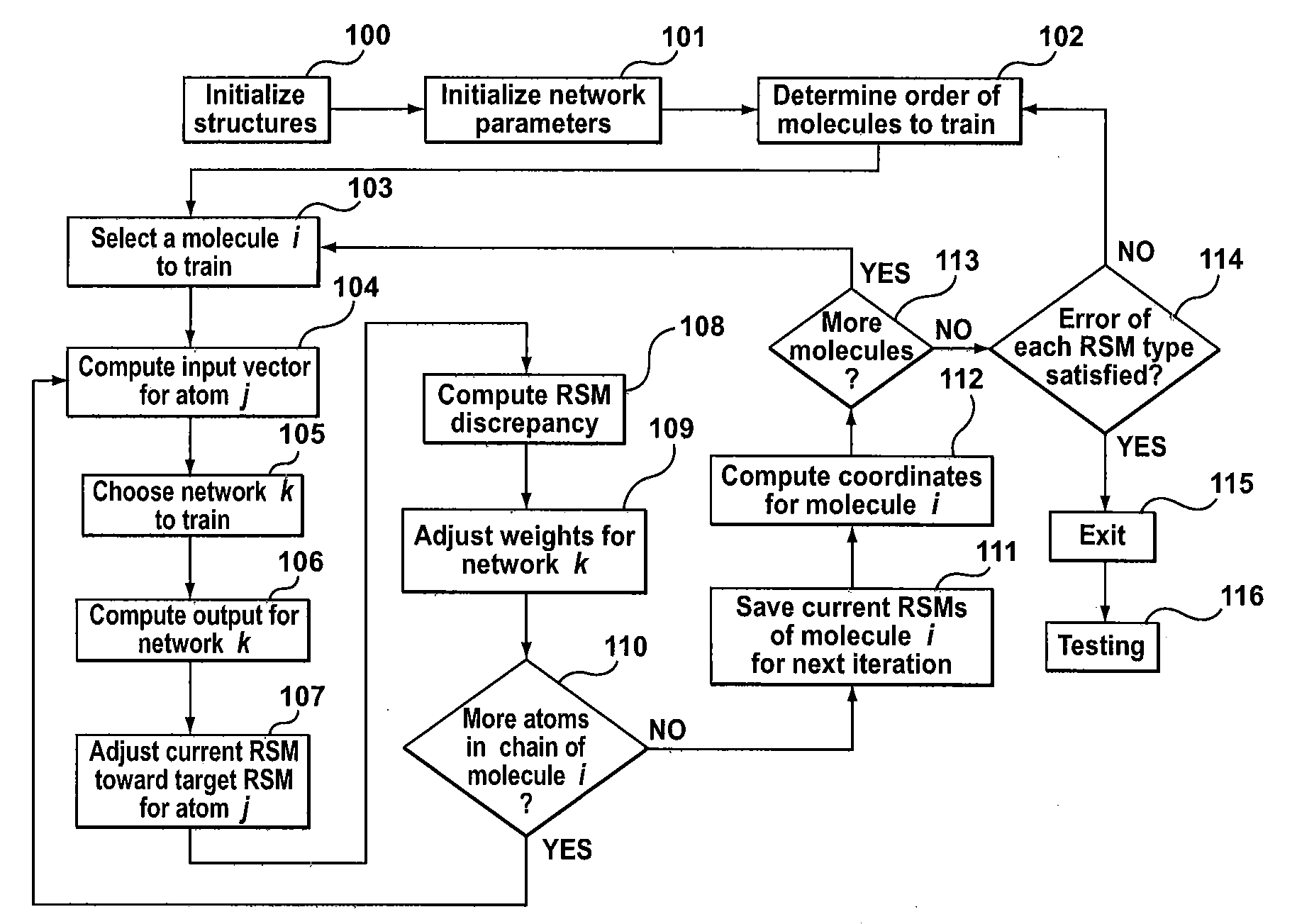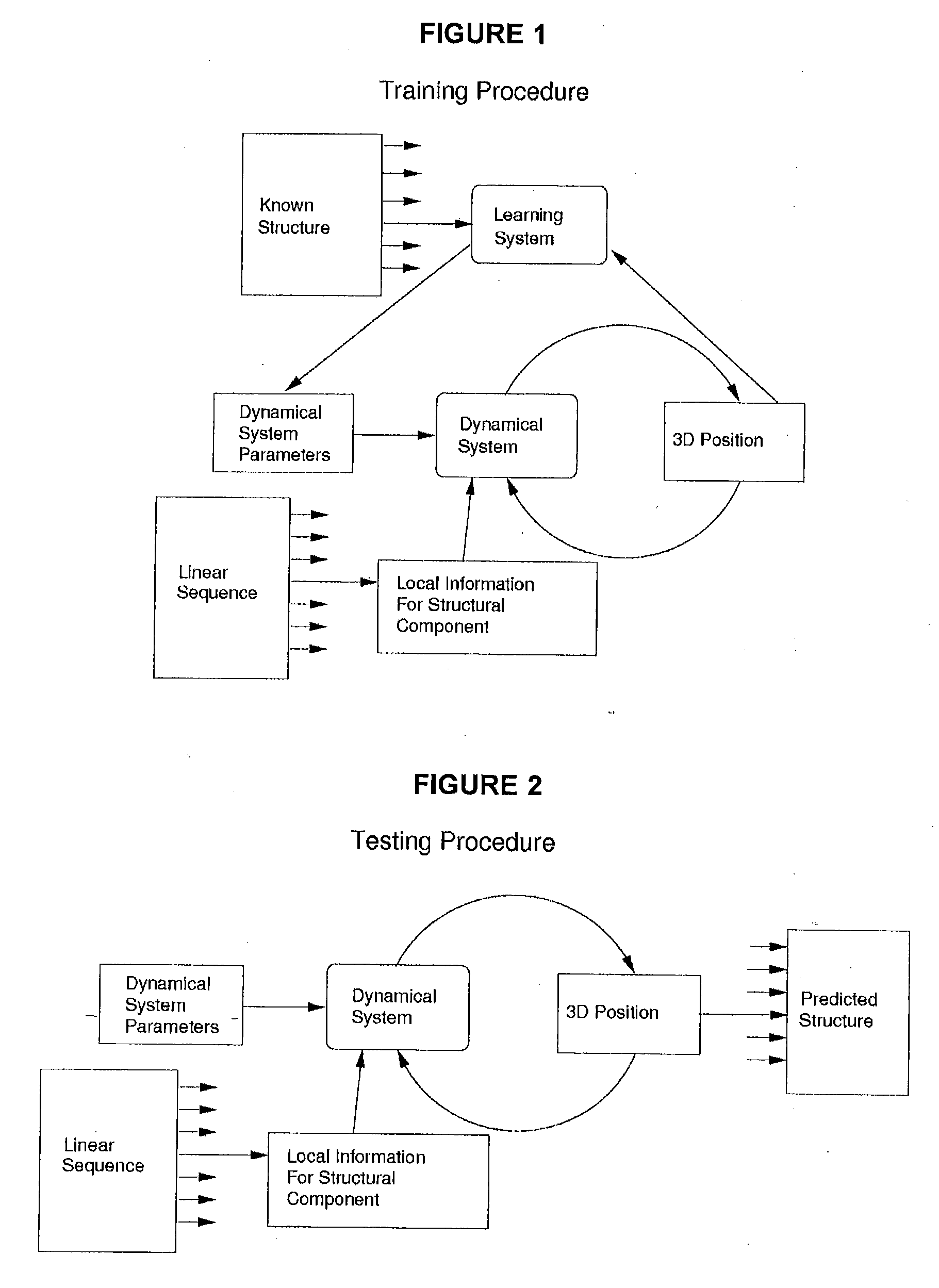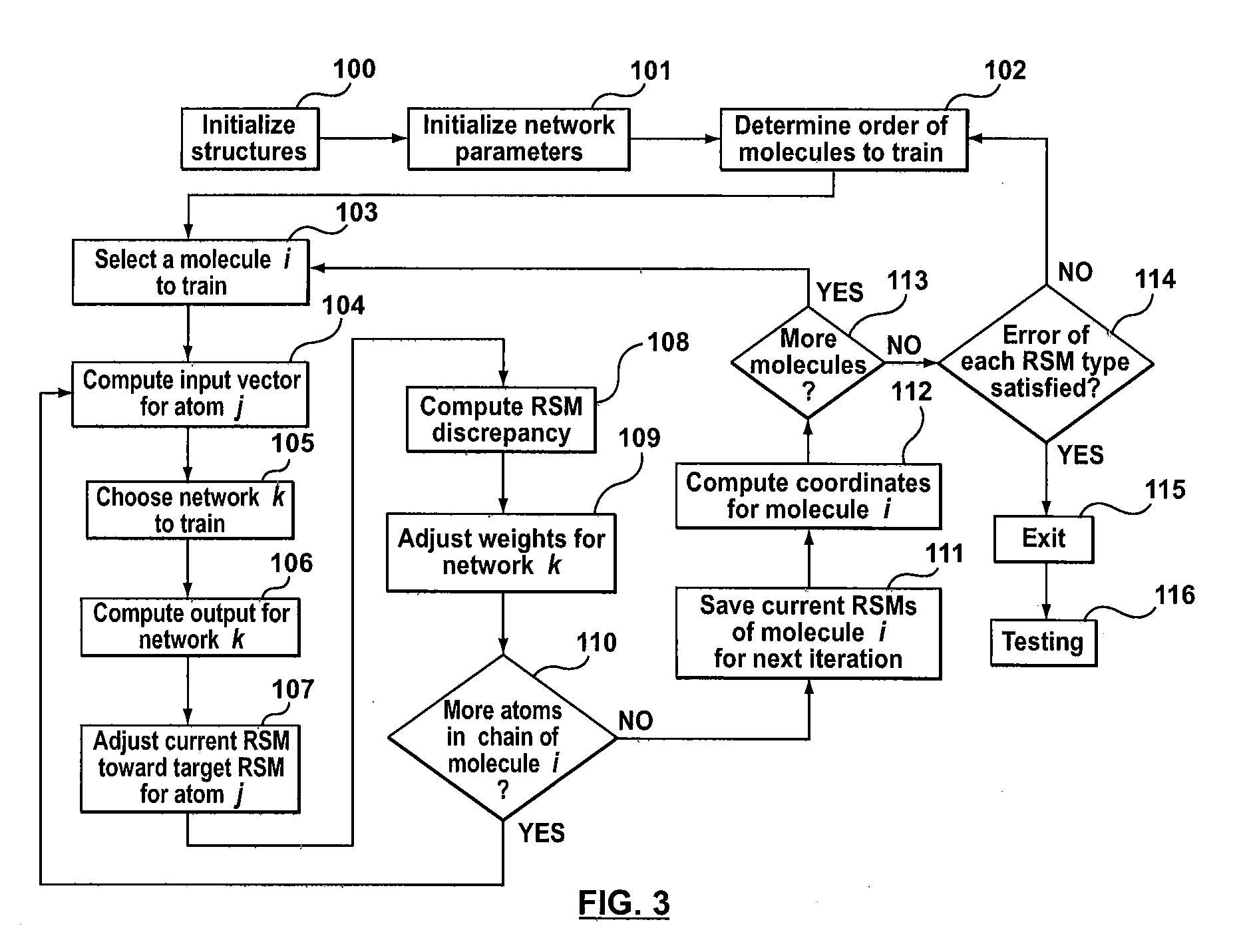Method, system and computer program product for levinthal process induction from known structure using machine learning
- Summary
- Abstract
- Description
- Claims
- Application Information
AI Technical Summary
Benefits of technology
Problems solved by technology
Method used
Image
Examples
example 1
Relative Spatial Measures
[0073]FIG. 4 shows one example of Relative Spatial Measures (RSMs) for a macromolecular primary structure consisting of 8 atoms. The RSMs of each atom is a measure of the torsion angle, bond angle, and bond length of the atom in question with respect to a group of three contiguous atoms of the chain from the 5′ to 3′ direction. For example, the RSMs of atom 6 are computed with respect to the group of three atoms labeled as 3, 4, and 5 as shown in FIG. 4 (top diagram). The torsion angle (λ) is computed using atoms 3, 4, 5, and 6; the bond angle (τ) is computed using atoms 4, 5, and 6; and the bond length (ρ) is computed using atoms 5 and 6. The RSMs of an atom can also be computed with respect to groups of non-adjacent atoms. The RSMs of atom 6 can also be computed with respect to groups of non-adjacent atoms. In FIG. 4 (bottom diagram), the RSMs of atom 6 are computed using atoms 1, 2, and 3 instead of atoms 3, 4, and 5.
example 2
Natural Property Identifiers
[0074]FIG. 5 shows an example of 14-bit encoding used to identify an amino acid for a given atom. Each bit describes a certain physical-chemical property of a particular residue; a ‘1’ would indicate the presence of the property, ‘0’ otherwise. The 23 possible residue types as commonly used in the Protein Data Bank form are listed in Table 1.
TABLE 1Amino acid codesFull amino acid nameThree-letter codeSingle-letter codeAlanineALAAArginineARGRAsparagineASNNAspartic acidASPDASP / ASN ambiguousASXBCysteineCYSCGlutamineGLNQGlutamic acidGLUEGLU / GLNGLXZambiguousGlycineGLYGHistidineHISHIsoleucineILEILeucineLEULLysineLYSKMethionineMETMPhenylalaninePHEFProlinePROPSerineSERSThreonineTHRTTryptophanTRPWTyrosineTYRYUnknownUNKXValineVALV
[0075]All the amino acids in Table 1, with the exception of the ambiguous ones (namely, B, Z, X) can be categorized into their respective 8 natural properties according to FIG. 6 (Taken from http: / / www.rcsb.org / pdb / ).
[0076]The last five ca...
example 3
Sample Input Vector
[0092]FIG. 8 provides an example of an input vector for predicting a peptide backbone (i.e. nitrogen, alpha carbon, and carboxyl carbon) and oxygen off the carboxyl per residue, and is made up of a 1 D-neighborhood of size fifteen residues and a 3D-neighborhood of size ten. In FIG. 8, each slot of the ‘1 D-neighborhood of amino acids’ represents the natural properties (14 bits) of a given atom within an amino acid and the TBL computed with respect to a group of contiguous atoms g that is adjacent and previous to a reference atom r for a chain from the 5′ to 3′ direction. Since for this example each neighbour is a residue di consisting of four atoms f, it is enough to use one 14-bit vector of natural properties n to disambiguate di from another residue dj, where i≠j, and concatenate the four TBLs representing each atom of f to n. Because the 1D-neighborhood size is 15, the total dimensionality from this neighborhood is 390. For the 3D-neighborhood, we determine 10 ...
PUM
 Login to View More
Login to View More Abstract
Description
Claims
Application Information
 Login to View More
Login to View More - R&D
- Intellectual Property
- Life Sciences
- Materials
- Tech Scout
- Unparalleled Data Quality
- Higher Quality Content
- 60% Fewer Hallucinations
Browse by: Latest US Patents, China's latest patents, Technical Efficacy Thesaurus, Application Domain, Technology Topic, Popular Technical Reports.
© 2025 PatSnap. All rights reserved.Legal|Privacy policy|Modern Slavery Act Transparency Statement|Sitemap|About US| Contact US: help@patsnap.com



